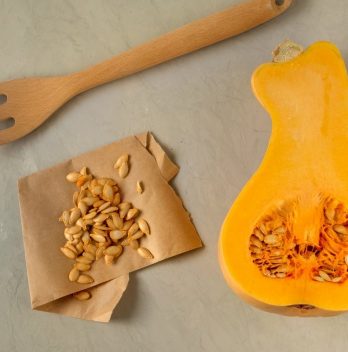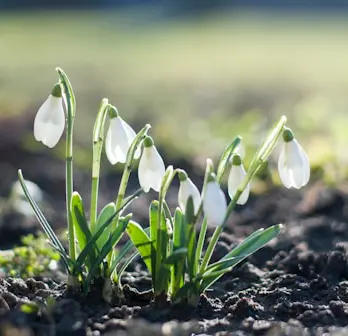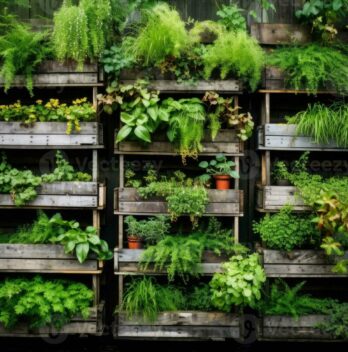It is essential to know squash germination time before you plant any of the varieties so that you are ready in time for germination.
Squash is a very versatile plant to grow and comes with many different options for the home garden. Squash is an easy plant to grow with high yields and comes in many different varieties. They are available in all sorts of shapes, patterns, and sizes that fall into different categories.
Summer Squash Versus Winter Squash
Winter squash is harvested at the end of the growing season to enjoy over the winter months. They include butternut squash, myriad of pumpkins, and spaghetti squash.
Summer squash is harvested throughout summer and includes examples like crookneck squash, zucchini, and pattypan.

Squash plants are available as bushy or trailing plants. Trailing squash should be left to sprawl over the
What Is Squash Germination Time?
Germinating squash seeds takes between 7 to 10 days if the weather is warm enough.
Start your summer squash seeds indoors at least 3 to 4 weeks before your last frost date. If you are sowing the seeds directly outdoors, you will need to wait until the
With the right
Once your seedlings are ready for transplanting, ensure that the last frost date is passed at least 2 to 3 weeks.
Growing Squash After Germination Time
With sprouting squash seeds successful, it’s time to thin them to at least 36 inches apart in all directions. Be sure to keep the
Common pests that affect the summer squash include cucumber beetles, aphids, slugs, flea beetles, and snails. To protect your summer squash from the above problems, ensure that you do not plant them in areas where melons or cucumbers have recently grown. Squash is not a good plant to grow in containers as it does not have enough space to spread out.
Where To Grow Squash
Squash prefers a warm sunny, sheltered spot with ideal conditions for good pollination and perfect for fruit development.
These plants are hungry feeders and require rich fertile
Harvesting Squash
Harvest your summer squash as soon as they attend the size that you want. However, besides the size, it is good to allow them to mature long enough for harvest. Summer squash varieties are harvested every day so that they don’t overgrown. Winter squash and pumpkins are harvested in the fall before the first date of frost.
To harvest the winter squash, cut either side of the stem to leave a T-shaped stub. Don’t carry your pumpkin by holding the stem as it could detach from the fruit and serve as an entry point for bacterial rot. Move your pumpkin fruits to a warm, dry, and sunny spot to cure.
If the weather has already turned cold and damp outside, cure your fruits in a greenhouse or next to a sunny windowsill. Curing hardens the skin in readiness for long-term storage. Winter squash and pumpkins can store for up to 6 months at room temperature.
Gardeners Basics Squash Seeds for Your Non-GMO Heirloom Vegetable Garden
FAQs
What’s the best way to start squash seeds?
Squash is usually a very easy plant to grow from seed, and they can be started in pots or directly in the garden. They like to have some shade during the hottest part of the day, so they may need to be moved to a partially shaded spot after the first few days. I would recommend starting them out in a pot, and then transplanting into your garden when they are large enough to handle it.
How long does squash take to germinate?
Squash seeds start to germinate in about 5 days, and then you need to wait for a few more days for the sprouts to grow. The sprouts will take about two weeks to get to be ready to transplant to your garden. Then you can expect about one or two months before they mature enough to harvest. This is a rough guide, but I’ve grown squash for years with no issues.
Squash seeds need light to germinate. When they do germinate, they will grow about as fast as any other vegetable or fruit. If you have room in your garden, I would recommend growing squash from seed, since it is easy to transplant them when they are small. Squash can be direct-seeded into the garden, but most people plant them in a seedling bed.
Why won’t my squash seeds germinate?
The problem might be that the seeds are old or damaged. They could also be planted in the wrong medium, or the conditions aren’t right. If they’re too old, they’re not going to do much of anything; if they’re damaged, they’ll never sprout.
Should I soak squash seeds?
Squash seeds are usually sold in stores or online, but they can be easily grown at home. However, there is one thing that you should consider before buying seeds: they should be soaked for 8 hours or overnight.
If you soak seeds for more than 24 hours, then it is impossible to germinate them.
Can you plant squash seeds right out of the squash?
Squash seeds can be planted directly in the ground after the vines are harvested, but you’ll need to get the seeds into the ground as soon as possible. The best time to do this is when the soil is warm and moist. If you plant the seeds in the fall, you can let them overwinter in a cold frame or greenhouse. Once spring arrives, cover the seeds with an inch of potting soil and water well.
What’s a great squash for kids to learn to grow?
Summer squash is a great vegetable for kids, and can be grown in the summer months when you don’t have access to a garden. These delicious and nutritious vegetables are known for their ability to grow large, long, and strong. They’re also an excellent source of vitamins A and C, as well as fiber.
What time of the year should I grow squash?
We grow both summer and winter squashes indoors during the fall months and transplant into the garden when temperatures are in the 50’s. The plants do not tolerate frost and you don’t want to plant anything out until the ground has warmed up.
Tips To Growing Summer Squash
Plant Your Squash Seeds Directly In The Garden
Summer squash varieties are best grown by sowing seeds directly on the ground. This way, the squash sprouts are more robust and do not need to be disturbed when moving to another place. If you live within the Arizona area, take advantage of the monsoon moisture by planting in mid-February through the beginning of April and again from mid-August to the beginning of September. Always check the local planting guides for your date; they will always be after your last frost date. Remember, squash prefers warm
Most summer squash varieties take between 45 to 60 days from planting to harvest. If starting seeds indoors, do so at least 5 to 6 weeks before the last day of frost in the spring.
Plant Several Types Of Summer Squash
To use the summer season, plant several types of summer squash that range from light to dark green, yellow, striped, solid, round, long, or disc-shaped. Although they are similar, they have some differences in flavor texture and uses. For example, a party pan squash has Stafford texture and cooks better in soups and stews. Zucchini is medium-textured and Lebanese squash has a more tender texture. The 30 summer squash varieties have different textures and different uses.
Attract As Many Bees As Possible
Planting summer squash varieties are a sure way to attract the beneficial bees as they pollinate and transfer pollen from the male and female plants. The bees are valuable not just for squash but also for other plans that you will grow in your garden.

Check Your Summer Squash Plants Daily
Squash plants are susceptible to pests and diseases and especially during the summer. Daily vigilance prevents minor problems from getting out of hand. For example, check for powdery mildew on the leaves. If you notice any is present, pick the leaves and dispose of them away from your compost. Use baking soda solution sulphur spray or milk solution to prevent and treat powdery mildew. You can also spray with neem oil. Check the undersides of leaves for squash bug eggs and remove both the eggs and the adults by hand.
Harvest Your Summer Squash Early And Often
Due to the summer heat, the squash family tends to mature fast and quickly. Therefore, it is vital to check them often and harvest them as early as you can to avoid overgrowing.
Squash grows quickly. One day, you notice a small one; most probably, it’s ready for harvest the next day. They taste better when tender and young, the more reason you should harvest them early. Harvest squash by cutting through the stem instead of the main vine with a sharp knife when fruits are about 4 to 6 inches long. When they are overgrown, the seeds and skin tend to grow tougher and larger, making them unattractive to eat.
Picking the fruit often encourages more production. Whatever you cannot consume, store it in the refrigerator for about a week or freeze it for an extended period.
Find more information about Will A Pumpkin Ripen Off The Vine?

Brian believes the best days are spent outside with soil on your hands. He finds his rhythm in the details of the garden—from carefully tending to established plants to the excitement of propagating new varieties. A true outdoor enthusiast, Brian is here to swap stories, share advice, and celebrate the rewarding work of growing.





